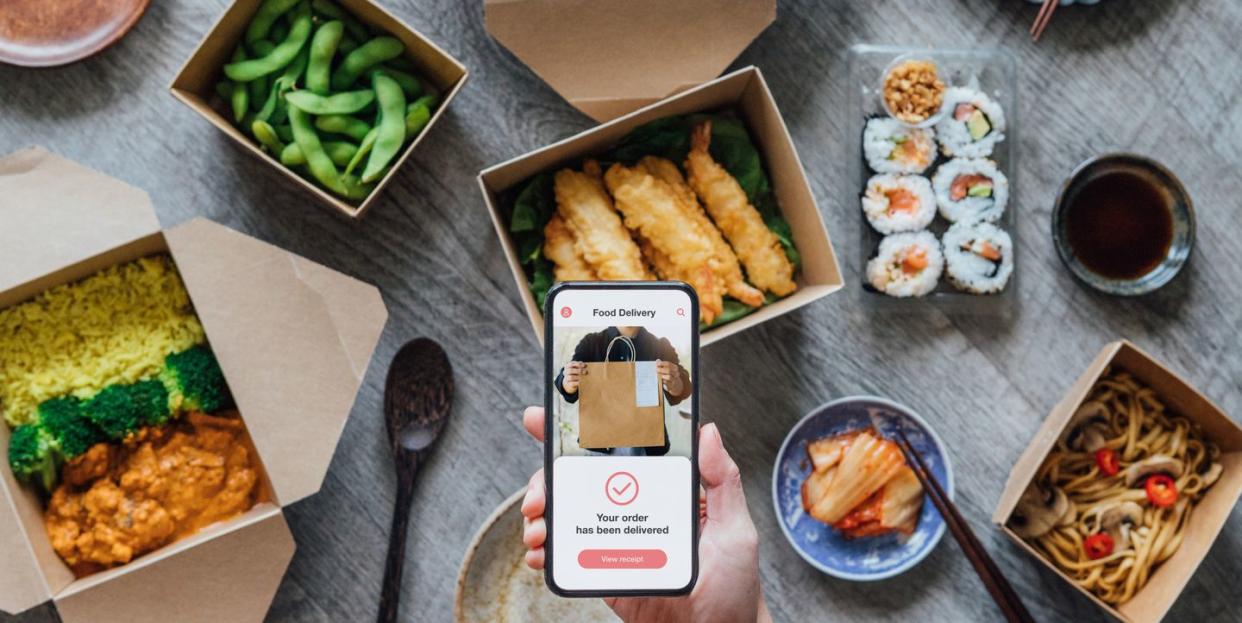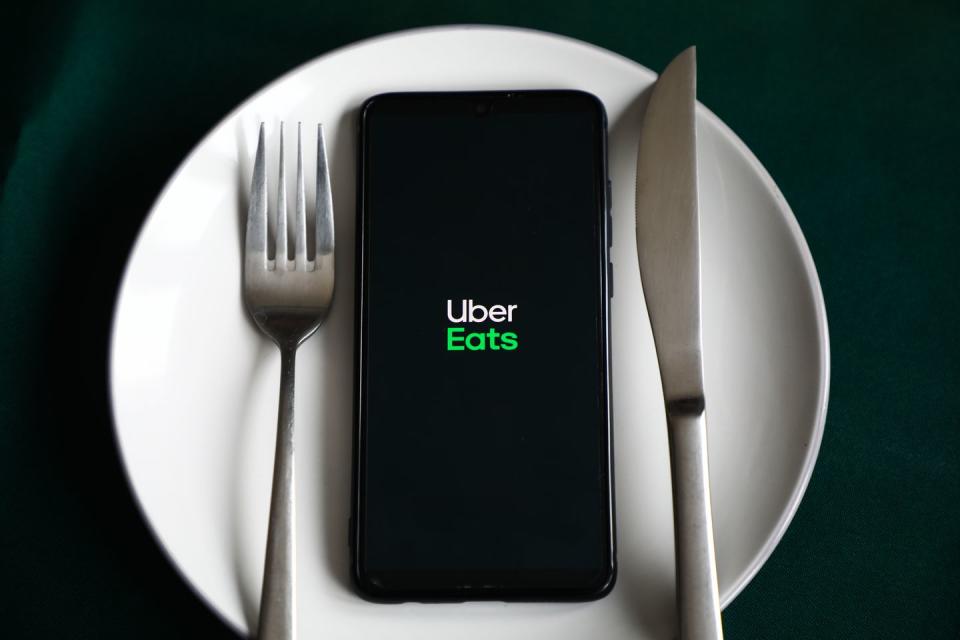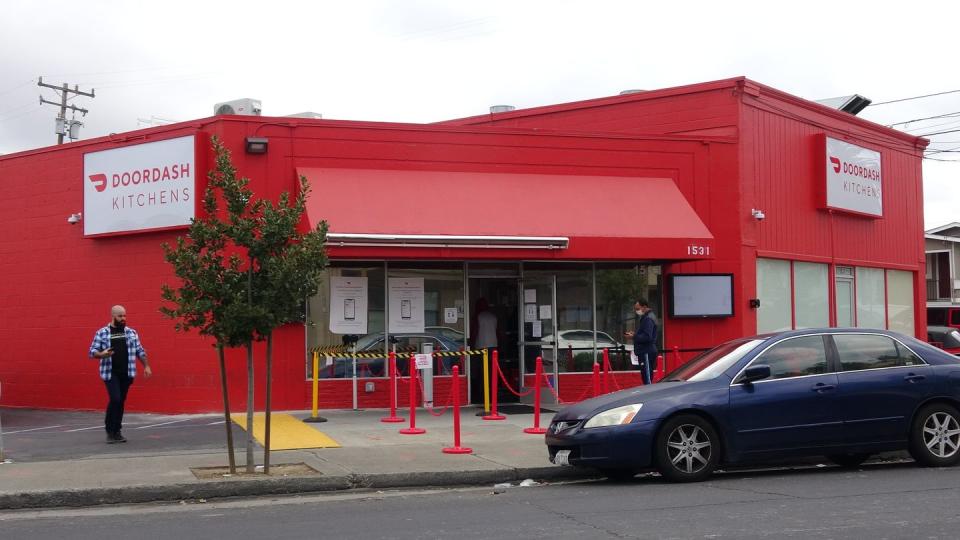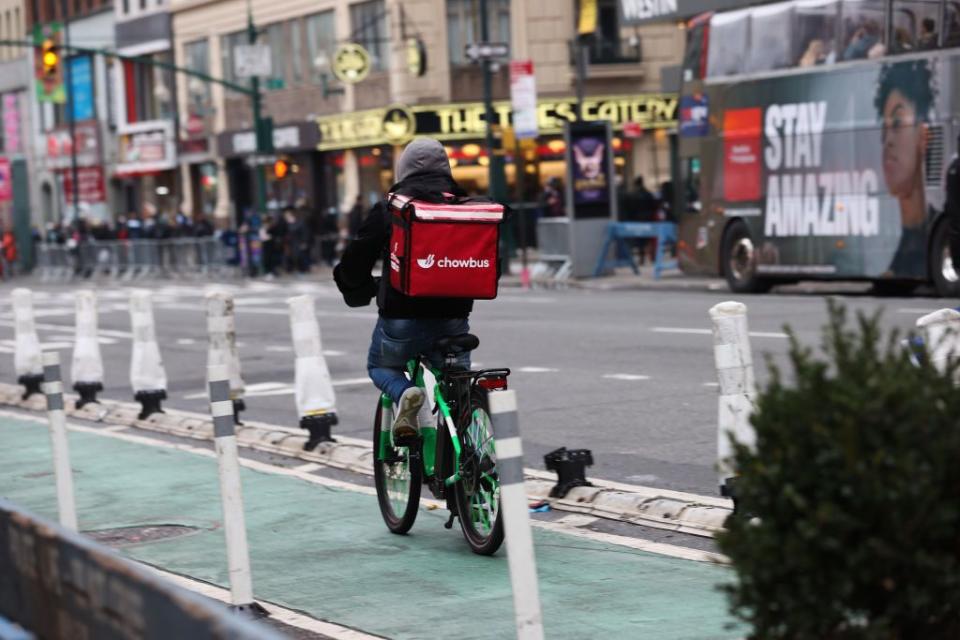These Outrageous Restaurant Scams Will Have You Deleting Your Delivery Apps For Good

"Hearst Magazines and Yahoo may earn commission or revenue on some items through these links."
Food delivery has evolved in a big way over the past decade. The era of collecting local takeout menus has given way to ordering anything you want on your phone.
Apps like UberEats, DoorDash, and GrubHub have become fixtures in American households. The food-delivery industry will see revenues reach nearly $232 billion in the United States this year, according to estimates from the market-research firm Statista.
These delivery services can offer discounts and are advertised as being more convenient than calling restaurants directly, but they are not immune from shady business tactics. The rise of food-delivery apps and the digitization of the industry makes consumers especially vulnerable to being misled.
On the other side of the coin, delivery apps are a double-edged sword for the restaurants themselves. “It’s really good for business during the slow season,” says Elle Creighton, a cook at Grotta di Fuoco in Long Beach, NY. According to her, however, dealing with inconsistent pickup times, managing rude couriers, and missing out on tips sours the experience.
"Talk to any restaurateur about third-party delivery apps, whether they've found a way to work with them or not, and you'll hear the phrase 'necessary evil,'" says Corey Mintz, food reporter and author of The Next Supper: The End of Restaurants as We Knew Them, and What Comes After.
When you consider the high commission fees imposed on the restaurants, the merits of delivery apps get even murkier. Here are some of the ways delivery apps are deceiving the public, and why you should switch back to the old-fashioned way of ordering.
Fake Photos

False advertising isn’t exactly a new phenomenon when it comes to food. Nearly all of us have been enticed by the stylized images of fast food burgers, only to be disappointed when you receive the real thing. But in the case of food delivery apps, many images aren’t just unlike the actual dish that’s served; they’re not even from the same restaurant.
There is demand across the industry for photos on online menus. According to a DoorDash study of over 15,000 restaurants, having photos raised sales by almost 50 percent. But for businesses that don’t have the equipment or means to take enticing images of their products, many use misleading alternatives.
Some restaurants on delivery apps use stock photography for different dishes. Online ordering system Lunchbox even launched their own AI photo generator for restaurants to create fake images for online menus.
DoorDash prohibits the use of stock photography, but other delivery platforms do not. Before you get tempted by photos of food, look with a critical eye to determine if that’s what will actually arrive at your door.
Ghost Kitchens

With rising overhead costs in an already risky industry, ghost kitchens were once heralded as a lifeline for up and coming businesses to make a name for themselves on delivery apps. But this phenomenon has major transparency issue for consumers. UberEats hosted 10,000 ghost restaurants in 2021, and that number has quadrupled in just two years.
The problem? Many of these brands are from the same exact restaurant. The Wall Street Journal reported that some restaurants and ghost kitchen startups create nearly 20 different businesses on the app with identical menus.
“There’s a CloudKitchen at 1842 West Washington Boulevard in Los Angeles that lists food on Postmates from Thai Market, Send Foods, Thai Thai Thai, Salathai, and Crazy Rich Asian Foods. They have nearly identical menus because they’re the same kitchen," says Mintz.
The practice isn’t just done by small businesses and startups; it’s also regularly used by established national chains pretending to be local joints. Restaurants like Applebee’s, Boston Market, and even Chuck E. Cheese sell food under different names on delivery apps. And while they claim transparency in theory, it’s not always evident in practice.
Randy Miller, the president of Boston Market, told CNN that their online brand "Rotisserie Roast" makes no attempt to hide its connection to the larger chain. “The direct connection to Boston Market is visible in all online ordering apps,” he said. But when you actually open the app, there’s no mention of it to be found.
The problem has become so rampant that UberEats had to step in. The delivery app is planning on curbing the practice of businesses listing multiple brands with the same menu. But even still, that won’t necessarily stop businesses from using loopholes to make misleading listings.
If you’re ordering from a delivery app and don’t recognize a restaurant’s name, you should google the associated address. Odds are that this “small business” may be a large company in disguise.
Unaffiliated Restaurants

Many restaurants agree to be listed on delivery apps to expand their reach to a larger audience. However, some platforms have listed businesses without their consent. In attempts to broaden their selection, companies like Grubhub, UberEats, and DoorDash have added non-partnered restaurants to their app. What makes this sketchy, you ask?
These apps use an automated service to import the restaurant’s menu to their app, but the items listed and their prices may not be accurate. When users order from these restaurants, the drivers themselves place the order directly and pay with a company-issued card. With potential discrepancies between the in-app menu and the restaurant’s actual offerings, you’re bound to be overcharged or not receive what you ordered.
Not only does this lead to an unsatisfactory experience for the consumer, it also has a major impact on the restaurants themselves. Grubhub even bought similar domain names to these restaurants and included them on the app instead of the official site—so all orders would bypass the restaurant and be directed straight to the app. While they stopped creating microsites in 2019, the listing of non-partner restaurants continues.
Multiple lawsuits have been filed against these apps, with many restaurants (including In-N-Out) alleging that the practice of listing their menus without their consent tarnishes their reputation. DoorDash admitted in a 2020 SEC filing that while they’ll remove these listings upon request, they still want to continue listing these restaurants without their permission. “If we are required to remove non-partner merchants for any reason, this could adversely affect our ability to attract and retain consumers, and could directly and adversely affect our business, financial condition, and results of operations,” they wrote.
Depending on where you live, you may be immune from this shady business practice. In Chicago, Washington, D.C., and all of California, delivery apps can only work with restaurants that consent to be listed. But delivering food from non-partner restaurants (and all of the sketchy tactics used to do it) is widespread and integral to these apps' business models.
Using online delivery platforms requires significant research and vetting to ensure the quality of the product you’re actually receiving. And with added fees and charges, you're often paying more money for the convenience. And what's worse? Your local restaurants aren't seeing that extra cash.
What’s been marketed as a convenient alternative to traditional takeout now often involves more work than it's worth. Instead of checking to see if the photos are real, the prices are correct, and the restaurants are even real businesses, you’re better off just ordering from the restaurant directly.
You Might Also Like

